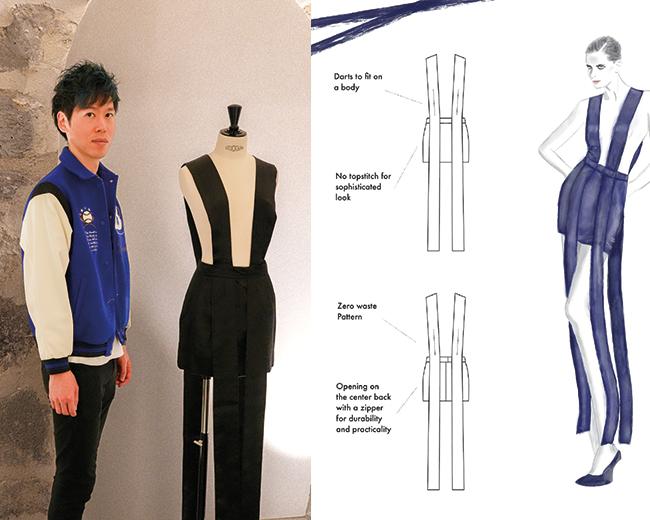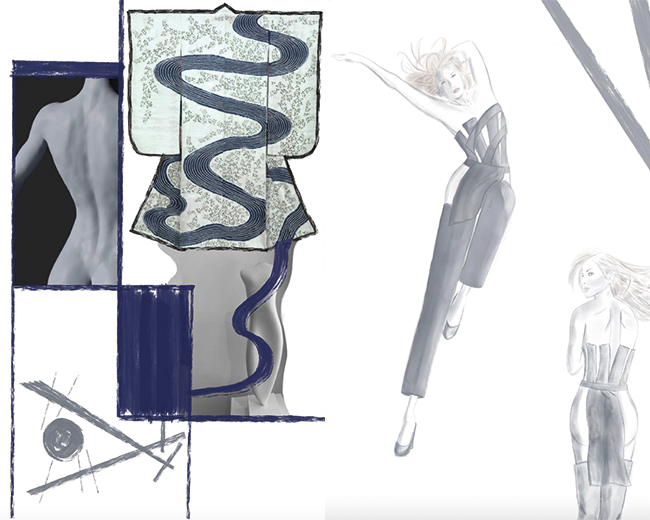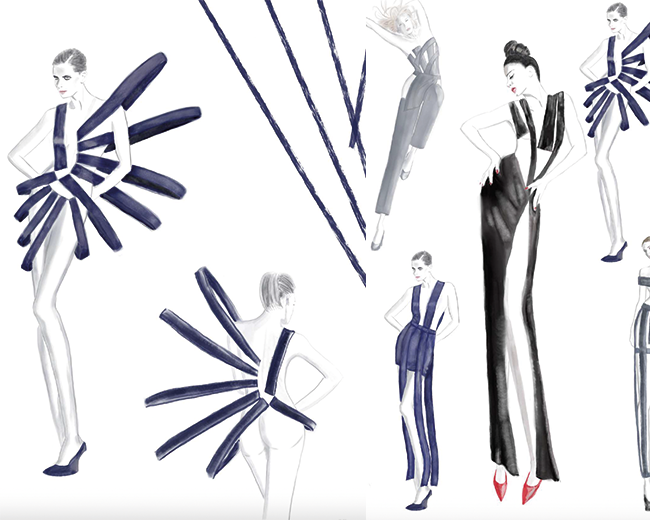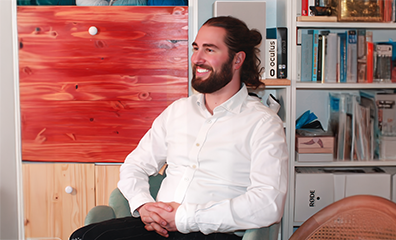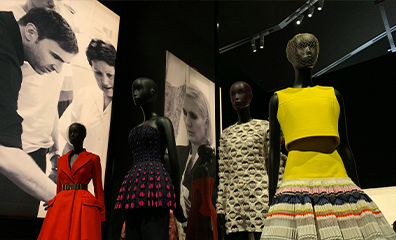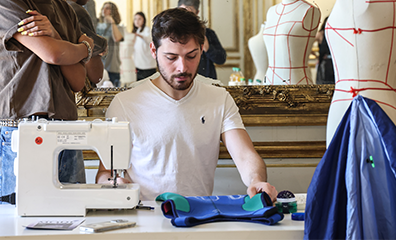IFA Paris Student in Pierre Cardin Award Semi-Finals
Posted on 28/05/2025
A third-year student in the Bachelor Fashion Design at IFA Paris, Haruki Ishii, has made it to the semi-finals of the 2025 Pierre Cardin Young Designers Award with a collection that blends traditional Japanese techniques and sustainable materials.
A collection rooted in tradition and innovation
Originally from Japan, Haruki Ishii is currently in his third year of the Bachelor Fashion Design program at IFA Paris, studying in the English-speaking track.
For the Pierre Cardin Young Designers Award 2025, he designed a collection titled Shikaku (“rectangle” in Japanese), based on a simple construction method: assembling only rectangular shapes, inspired by a traditional Japanese technique. This creative approach also reflects his strong commitment to sustainability, as he selected only natural fabrics sourced from deadstock materials.
The journey of a young designer
Q: Can you briefly introduce yourself? Where are you from, and what brought you to IFA Paris?
A: My name is Haruki, I’m from Japan and I’ve lived in several countries before moving to France. When I decided to become a fashion designer, moving to Paris felt like the most natural choice. I found out that IFA Paris offered programs taught in English, which confirmed my decision.
Q: What made you want to take part in the Pierre Cardin Young Designers Award?
A: One of my instructors encouraged me to apply, saying that my creative universe really resonated with the theme of the competition. She showed me some references from Pierre Cardin’s work, which I wasn’t very familiar with at the time, and it immediately spoke to me. Her belief in my work gave me the push I needed to take part in the adventure.
Q: What are you learning during your studies at IFA Paris?
A: I’ve learned a lot about both the technical and creative aspects of design, but what stands out the most for me is the importance of following what truly inspires me. The program has encouraged me to listen to my instincts, explore my own universe, and shape a path that reflects who I am, rather than simply meeting external expectations.
Q: What qualities do you value most in a designer?
A: I value openness to the arts in general and the ability to draw inspiration from other disciplines. Personally, I try to challenge myself with every new project by testing different approaches. I also believe it’s essential to work across multiple creative mediums—whether it’s drawing, digital tools, sewing, or other techniques—as it gives you more freedom to express your ideas.
A collection inspired by Japanese tradition
Q: Your collection is called Shikaku and is based on a traditional Japanese method of garment construction. Can you tell us more?
A: It’s a technique that relies entirely on assembling rectangular shapes. Unlike the Western approach, which usually starts by sketching a silhouette and then cutting the fabric to match it, the Japanese method uses only rectangles. The garment is built from these shapes.
Q: Designing clothes using only rectangles must require some compromises. What was the biggest challenge for you?
A: The biggest challenge was reconciling two very different logics: on one hand, feminine beauty, which is expressed in three dimensions; on the other, my concept, which is based on two-dimensional rectangular forms. Finding a balance between the two was a real challenge. I also wanted to move away from the masculine connotation of rectangular silhouettes and preserve a sense of femininity.
Q: The kimono seems like an important reference in your work. How does it influence your design process?
A: The kimono definitely influences my work, sometimes without me even realizing it. My teachers have often pointed out how some of my designs resemble its structure. It’s part of my visual culture. That said, the kimono has a loose, flowing shape that tends to create the same outline regardless of who wears it. I also appreciate the more Western approach to clothing, which focuses on personalization and tailored fits that adapt to individual body shapes. Both influences coexist in the way I think about design.
Q: If you had to describe your creative world in three words?
A: Sensuality, femininity, confidence.
Sustainable materials and zero-waste pattern cutting
Q: How did the zero-waste pattern technique influence your creative process?
A: The fact that I only use rectangular shapes places constraints on the design, but it’s a stimulating limitation. It forced me to rethink the construction process entirely. It also allowed me to optimize the use of fabric—I can create two garments using the same amount of fabric I’d normally need for just one with conventional methods.
Q: Can you tell us about the transition from sketch to prototype? What was the most technical part?
A: The move from sketch to three-dimensional garment was challenging. On paper, the design looked good, but once I started draping on the mannequin, I realized that some shapes didn’t fall the way I expected. I used draping techniques extensively to adjust the volume and recreate the effect I had imagined.
Q: You only use natural fabrics from deadstock. Why this choice?
A: Because they’re beautiful and comfortable to wear—and yet often overlooked. I want to give these materials a second life and bring them back into the creative process. It’s also a more responsible way to use resources.
Q: Do you think fashion can truly become sustainable on a large scale?
A: Yes, I think it’s possible—but brands and consumers need to really understand what sustainability means. Once that understanding is in place, it becomes easier to make consistent choices.
Join the next generation of fashion designers
By combining traditional techniques, environmental awareness and a personal approach to design, Haruki represents a new way of thinking about fashion. If you too want to explore your own creative vision, join IFA Paris and discover our fashion designing programs.
